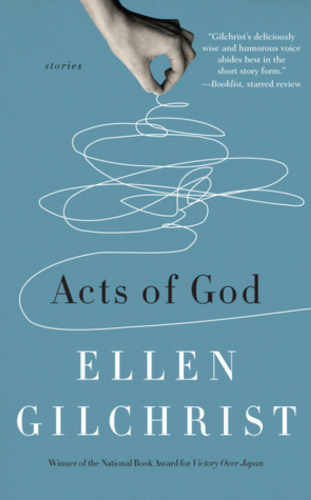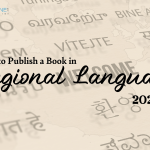In the fast-paced world of literature, short stories continue to captivate readers with their ability to deliver powerful narratives in a compact form. As we step into 2024, the literary scene is buzzing with an array of short story collections that showcase the diverse talent of contemporary authors. Publishing a short storybook is a rewarding but multifaceted process that requires careful planning, dedication, and a solid understanding of the publishing industry.
This guide aims to provide aspiring authors with a comprehensive roadmap on how to publish a short storybook, from crafting compelling narratives to navigating the complexities of the publishing world.
You may also read: What is Situational Irony? Definition, Examples and Tips for Writers.
Crafting Compelling Short Stories
The first stage in preparing your work for publication is to write captivating short tales. A rigorous approach to character development, story organisation, and thematic coherence is required. Each character should be well-developed and elicit genuine emotions in the readers. The story structure should be interesting, with a distinct beginning, middle, and finish. Thematic coherence guarantees that your stories are linked by a common thread, resulting in a more unified collection.
To enhance your stories, seek feedback from various sources. Writing groups provide diverse perspectives, beta readers offer valuable insights from a reader’s standpoint, and professional editors bring an objective and polished touch. This iterative process of refinement is crucial to ensure that your stories resonate effectively with your target audience. Crafting compelling short stories not only sets the stage for a successful collection but also establishes your distinct narrative voice.
Building an Author Platform
In the digital era, authors must build a strong online presence. Create a professional author website that acts as a hub for your work, biography, and contact information. Make smart use of social media tools to communicate with potential readers and fellow authors. Building a community around your work requires active engagement in debates, the provision of excellent information, and the display of your personality.
An author platform not only aids in marketing but also provides a platform to showcase your unique voice. Regularly update your website and social media channels with relevant content, including writing updates, behind-the-scenes glimpses, and interactions with your audience. By fostering a sense of community, you create a dedicated readership that is more likely to support your book when it’s ready for publication.
You may also like: Book Writing Tools That Actually Make a Difference
Compiling and Organizing Your Short Stories
Once you’ve compiled a collection of polished short tales, organisation becomes an important part of the publishing process. Organise the stories in a logical and thematic order to produce a unified reading experience. Consider the narrative flow, making sure that the stories complement and improve one other rather than feeling disconnected.
The arrangement of stories should be deliberate, guiding readers through a seamless journey. This could involve organizing them chronologically, thematically, or based on the emotional arcs of the characters. A well-organized collection adds depth and resonance to the overall reading experience, leaving a lasting impression on your audience. Thoughtful compilation and organization demonstrate not only your storytelling prowess but also your ability to curate an immersive literary experience for your readers.
Researching Publishing Options
Authors have several publishing options, each with its own set of advantages and considerations. Understanding these options is crucial for making informed decisions.
a. Traditional Publishing: Research literary agents and publishers that specialize in short story collections. Prepare a compelling query letter, synopsis, and sample stories as per their submission guidelines. Be patient, as the traditional publishing process can be time-consuming.
b. Self-Publishing: Platforms like Amazon Kindle Direct Publishing (KDP) and other self-publishing services offer authors the opportunity to independently publish their work. Ensure your short story book meets professional standards by investing in professional editing, cover design, and formatting services.
c. Hybrid Publishing: Some authors choose a hybrid approach, combining elements of both traditional and self-publishing. Hybrid publishers may offer certain services while allowing authors to retain more control over the publishing process.
You may also like: Literary Fiction vs Genre Fiction: Definition & Examples
Editing and Proofreading
Regardless of the path chosen for publishing, the importance of professional editing cannot be overstated. Once your short story collection is complete, hiring a qualified editor is a non-negotiable step to ensure the highest quality of your work. An editor will review your stories for grammar, punctuation, and spelling errors, ensuring a polished and error-free manuscript.
A full edit goes beyond simple proofreading to examine the overall cohesion of your collection. Examining the continuity of characters, themes, and story aspects throughout the stories is part of this. A well-edited book not only increases its marketability but also demonstrates your commitment to producing a refined and professional work of writing. The editing process should be viewed by authors as an investment in the integrity of their work, with the goal of producing a finished product that connects with readers on both intellectual and emotional levels.
Designing an Eye-Catching Cover
Because the book cover is the first visual experience readers have with your short story collection, its design is important to the success of your book. It is critical to invest in a professionally designed cover in order to attract and engage potential readers. Not only should the cover be physically beautiful, but it should also correspond to the genre and topic of your short tales.
Consider hiring a professional cover designer with genre experience, or look into design services provided by reliable self-publishing sites. A well-designed cover serves as a visual reflection of the spirit of your story, tempting people to read on. It’s a crucial marketing strategy that helps greatly to your book’s overall success, allowing it to stand out in a crowded literary scene.
You may also like: The Role of a Book Publisher: From Manuscript to Bestseller
Navigating the Publishing Process:
Depending on whether you select conventional or self-publishing, the publication process entails different processes. Finding and hiring a literary agent, negotiating contracts, and working closely with publishers are all part of the process for conventionally published authors. Literary agents are essential in representing your work to publishers and negotiating favourable terms for you.
For self-published writers, the procedure entails following the platform’s step-by-step instructions. Pricing, distribution routes, formatting, and marketing techniques are all part of this. Self-publishing gives authors more autonomy, but it necessitates a proactive marketing and distribution strategy.
In both cases, a thorough understanding of the publishing process is essential. Authors must be prepared to engage with industry professionals, make informed decisions, and actively participate in the promotion of their work to ensure the success of their short story collection in the competitive market.
Marketing and Promotion
Effective marketing is the key to a successful book launch and long-term sales. Creating a complete marketing plan that includes both online and offline techniques is critical. Make use of the potential of social media platforms to establish a vibrant online presence. Engage prospective readers, give behind-the-scenes glances, and build excitement for your short story collection. Collaborate with book bloggers for reviews, take part in book tours to broaden your reach, and look into additional promotional opportunities to reach your target audience.
Author events, both online and offline, offer opportunities for direct engagement with readers. Interviews, whether in podcasts, blogs, or traditional media, provide a platform to share your writing journey and promote your book. Collaborating with other authors for joint promotions or events can amplify your book’s visibility. A multifaceted marketing strategy maximizes your book’s exposure and increases the likelihood of capturing the interest of your intended readership.
Distribution Channels
Understanding and properly utilising distribution channels are critical stages in ensuring that your short story book reaches its target audience. The publisher often handles distribution for conventionally published writers, distributing your work in bookshops, online merchants, and libraries. Authors that self-publish should carefully consider the distribution choices provided by platforms such as Amazon Kindle Direct Publishing (KDP), Barnes & Noble, and others.
To maximise your book’s availability, consider both digital and print forms. E-books cater to the digital reader population, whilst print versions cater to those who want a more tactile reading experience. Consider the benefits and drawbacks of exclusive versus broad distribution choices, taking into account aspects such as royalties, market reach, and reader accessibility. A well-planned distribution strategy guarantees that your book is available to a wide audience, enhancing its chances of commercial success

Influential Works in Short Stories & Poetries:
- “Stories of Your Life and Others” by Ted Chiang
- “The Best American Short Stories” by Min Jin Lee, Heidi Pitlor
- “The Things They Carried” by Tim O’Brien
- “Her Body and Other Parties” by Carmen Maria Machada
- “My Dear Sensai” by E.S. Kapoor
- “Some Broken Hearts” by Shashanka Ghosh
- “Acts of God” by Ellen Gilchrist
"Stories of Your Life and Others" by Ted Chiang
Stories of Your Life and Others provides a unique blend of the profoundly bizarre and the intimately relatable. Ted Chiang’s narratives introduce characters grappling with sudden, often surreal changes—from the emergence of automatons to encounters with extraterrestrial beings—all while seeking a semblance of normalcy. Chiang’s sharp intelligence and wit explore the essence of existence in a world defined by uncertainty, revealing pockets of beauty and wonder amidst the unexpected. This award-winning collection solidifies Chiang’s position as a celebrated contemporary writer, delivering tales that resonate as both strange and familiar, making Stories of Your Life and Others a timeless and cherished classic.
"The Best American Short Stories" by Min Jin Lee, Heidi Pitlor
Guest editor Min Jin Lee emphasizes the indispensable role of storytelling in enriching lives. “The Best American Short Stories 2024” unveils twenty narratives reflecting a world marked by fractured relationships yet imbued with profound hope. From a friendship strained by the Russia-Ukraine war to a man seeking familial reconciliation post-rejection, these tales delve into societal shadows. Miraculous Twitter empathy aids a lost cat’s journey to a forever home. Illuminating and poignant, the anthology confronts darkness, offering emotional truths that, in Lee’s words, restore sanity and provide solace for the days ahead. Featuring diverse voices like Cherline Bazile, Lauren Groff, and Ling Ma, it’s an undeniably human exploration.
You may also like: Foreword vs. Preface: Know the Difference
"The Things They Carried" by Tim O’Brien
O’Brien’s timeless classic delves into the Vietnam War, offering unconventional war narratives rooted in his personal experiences. Beyond depicting the war’s events, the book explores the complexity of storytelling and the inherent challenge of capturing absolute truth. Drawing from his own service and its aftermath, O’Brien exposes the elusive nature of reality, asserting, “Often the crazy stuff is true and the normal stuff isn’t.” A poignant and thought-provoking work, the novel transcends its war theme, resonating deeply across generations. O’Brien masterfully unveils the profound truth that storytelling, like war itself, holds nuanced layers, leaving an indelible mark on readers.
"Her Body and Other Parties" by Carmen Maria Machada
You may also like: Choosing the Right Publisher: A Step-by-Step Guide for Your Book
"My Dear Sensei" by E.S. Kapoor
My Dear Sensei” by E.S. Kapoor is a mesmerising literary mosaic that intertwines tales of education, resilience, and magic. Kapoor skillfully navigates post-Independence India, weaving historical events with personal narratives. The characters, from Simon to Pushpa Mahindra and Ms. Mayuri, embody the struggles and triumphs of educators. Kapoor’s prose, lyrical and evocative, transports readers to the heart of each story, addressing systemic issues within education. The book’s enchanting blend of history, social commentary, and magical realism creates an immersive experience.
"Some Broken Hearts" by Shashanka Ghosh
This book is about humans and our mundane, trivial matters of survival. Normally, we react to what life throws at us, weak in the face of challenges, be it in our relationships, in our workplace, and above all, in dealing with our fear, our insecurities, etc. If you pick any of the twelve stories, you will notice the stark similarity, or rather, an absence of dissimilarity, between them and our general view of life, our environment, or the people around us. Some Broken Hearts is a collection of five short stories that will evoke myriad emotions in the reader and are certain to leave the reader lingering with them in the aftermath. The stories have been woven with a lot of musings, and I am sure they will reveal your taste and mine.
"Acts of God" by Ellen Gilchrist
Delve into National Book Award winner Gilchrist’s meticulously crafted Southern fiction. A nine-year labor of love, this short story collection is hailed by the author as “a book of praise and wonder.” Gilchrist reflects on the marvels of humanity, emphasizing that in youth, self-serving ambitions often blind us to the extraordinary nature of others. One narrative unfolds in the aftermath of a tornado’s nocturnal rampage through Adkins, Arkansas, as four teenagers embark on a mission of aid. Gilchrist’s flawlessly precise prose captures the essence of Southern life, offering readers a profound exploration of human connections and the remarkable beauty inherent in everyday existence.
Building Long-Term Author Success
The release of your short story book marks the beginning of your author journey, and building long-term success involves ongoing efforts. Cultivate a strong relationship with your readership by staying active on social media platforms. Respond to reviews, whether positive or constructive, to show appreciation for reader feedback. Consistently produce quality content on your author website or blog, providing readers with additional insights into your writing process and upcoming projects.
Consider future projects to sustain momentum and keep readers engaged. Whether it’s another short story collection, a novel, or exploring different genres, maintaining a consistent and diverse body of work contributes to long-term success. Actively participate in the writing community, attend literary events, and collaborate with fellow authors. Building a lasting and successful author career requires a combination of quality writing, effective marketing, and a genuine connection with your readership.
Publishing a short story book is a fulfilling journey that requires dedication, creativity, and business acumen. By crafting compelling stories, building a robust online presence, navigating publishing options, and executing effective marketing strategies, aspiring authors can turn their literary dreams into reality. Remember that the publishing landscape is ever-evolving, so stay adaptable, open to learning, and committed to delivering exceptional storytelling to your readership.
Read: Everything to Know about Travel Fiction: Meaning, Definition & more.
In the realm of short stories, 2024 has proven to be a year of diverse voices and compelling narratives. From the introspective tales of Alice Munro to the fantastical worlds of Haruki Murakami, each collection offers a unique perspective on the human experience. Whether exploring the complexities of identity, the magic of the mundane, or the threads that connect us all, these short story books of 2024 provide readers with a rich tapestry of emotions and ideas to explore.
As we continue to navigate the ever-evolving landscape of literature, these collections serve as beacons of creativity and inspiration, inviting readers to immerse themselves in the artistry of the short story form.
You may also like: Book Cover Design 101: Creating Eye-Catching Book Covers























